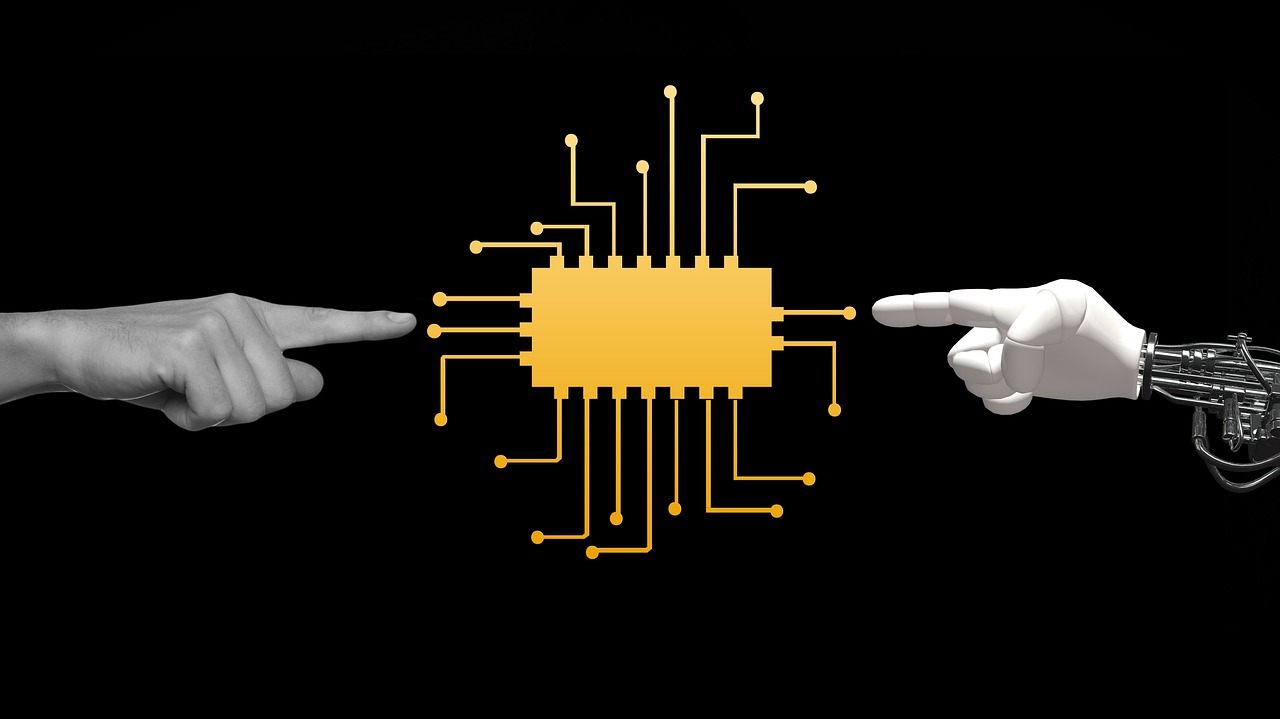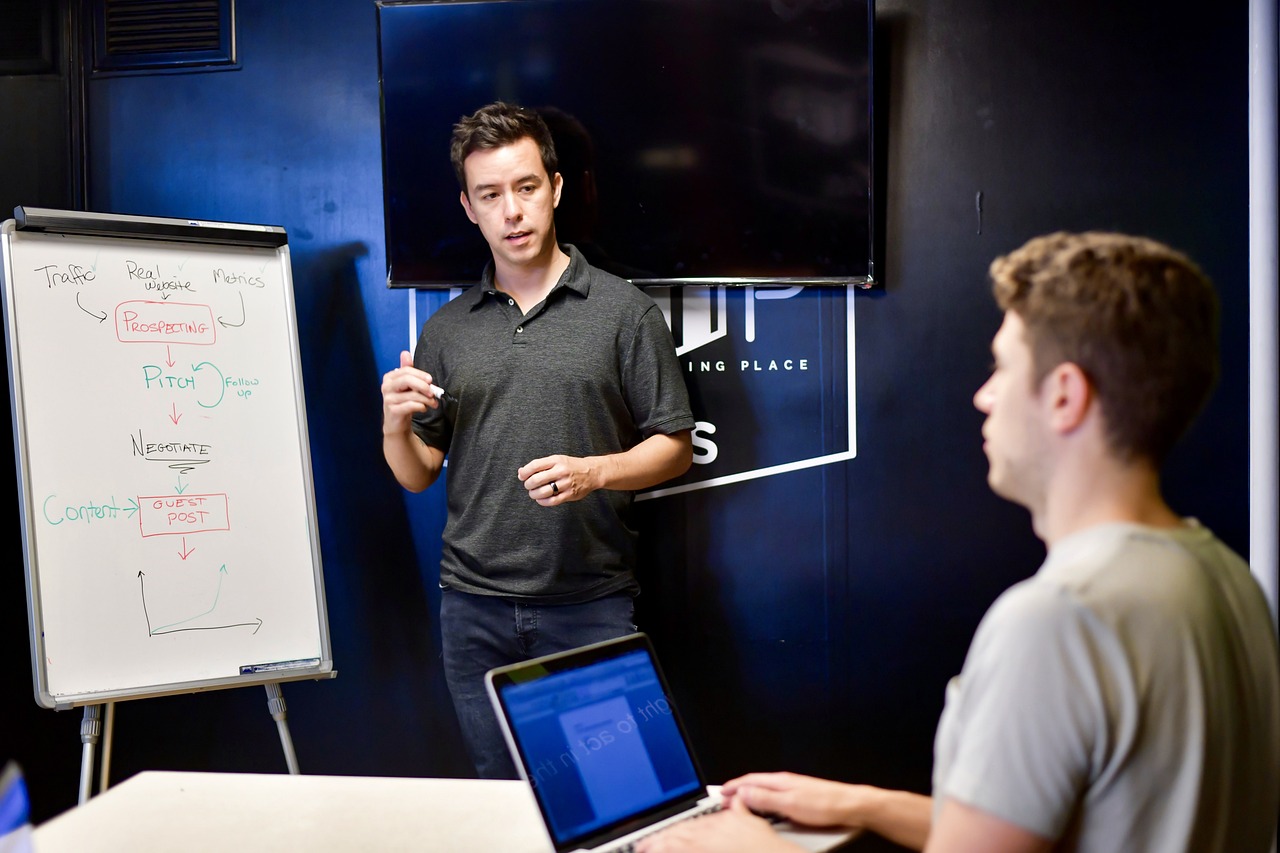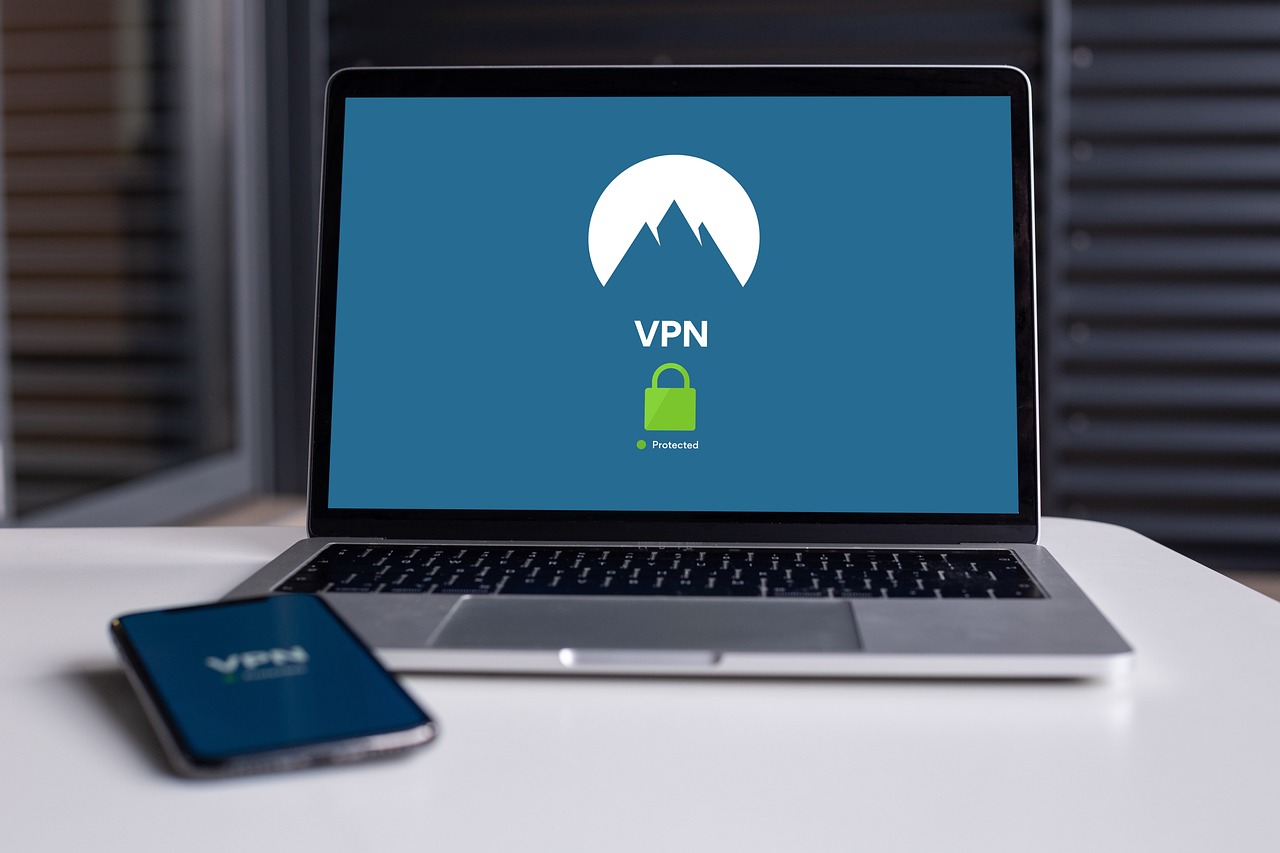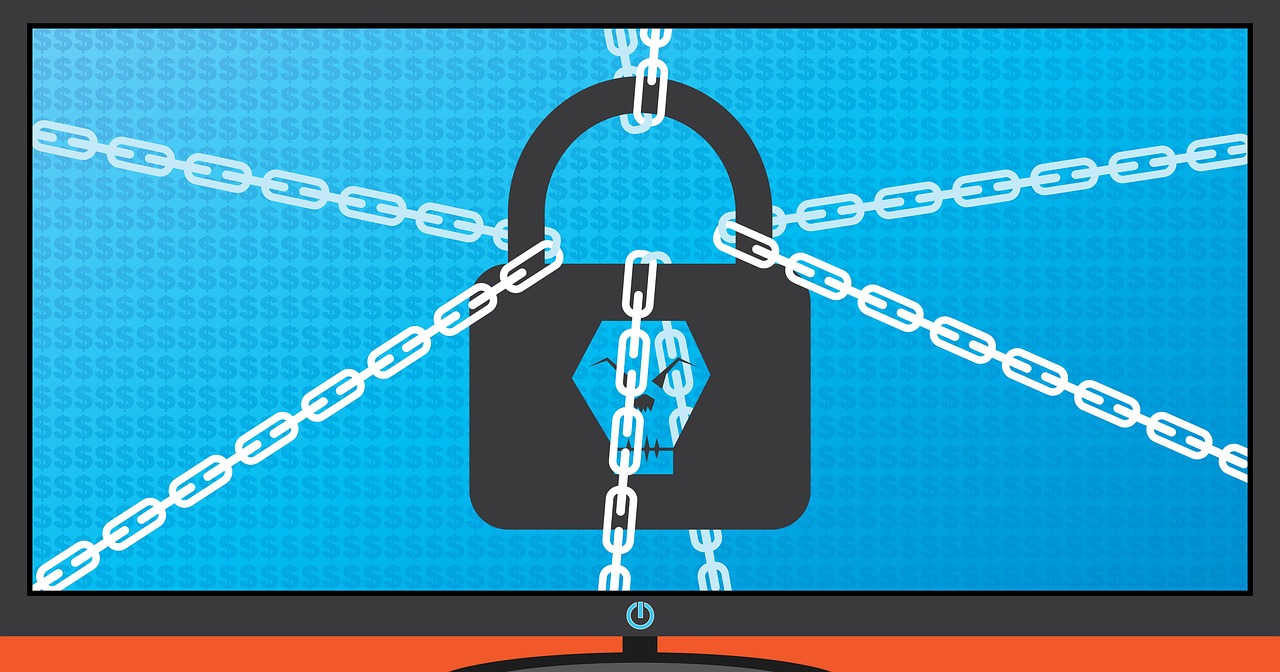How to Protect Your Business from Advanced Persistent Threats
In today's digital landscape, the threat of Advanced Persistent Threats (APTs) looms larger than ever. These sophisticated cyber attacks are not just random acts of malice; they are well-planned schemes carried out by skilled adversaries who are determined to infiltrate organizations over extended periods. So, how can businesses safeguard themselves against such relentless threats? The answer lies in a multi-layered approach that encompasses prevention, detection, and response strategies.
First and foremost, understanding the nature of APTs is crucial. These attacks often involve a combination of social engineering, malware, and exploitation of vulnerabilities within an organization’s infrastructure. The motivations behind APTs can vary from corporate espionage to political agendas, making it imperative for businesses to stay one step ahead. By investing in robust cybersecurity measures, organizations can significantly mitigate the risks associated with these threats.
Moreover, identifying vulnerabilities within your business is a critical first step. Conducting regular vulnerability assessments allows you to pinpoint weak spots in your security infrastructure. This proactive approach not only helps in fortifying defenses but also prepares your organization for potential attacks. In this ever-evolving cyber threat landscape, staying informed and vigilant is key.
Implementing strong security measures is non-negotiable. This includes deploying firewalls, intrusion detection systems, and endpoint protection solutions that act as the first line of defense. However, technology alone is not enough. Employees play a vital role in your cybersecurity strategy. By fostering a culture of security awareness and providing regular training, businesses can empower their staff to recognize and respond to potential threats effectively.
Furthermore, establishing an incident response plan is essential for minimizing damage when an APT does occur. This plan should clearly define roles and responsibilities within your organization, ensuring that everyone knows what to do in the event of an incident. Regular testing and updates to this plan will help maintain its effectiveness and ensure that your team is prepared for any eventuality.
Lastly, leveraging threat intelligence can provide valuable insights into emerging threats. By gathering and utilizing this information, businesses can enhance their defenses and stay ahead of potential attacks. Collaborating with industry peers and sharing intelligence is another effective strategy that can lead to a more secure environment for all parties involved.
In conclusion, protecting your business from Advanced Persistent Threats requires a comprehensive approach that combines technology, human awareness, and strategic planning. As cyber threats continue to evolve, so too must our strategies for combating them. By remaining vigilant, proactive, and adaptable, businesses can significantly reduce their risk and safeguard their assets against these sophisticated attacks.
- What are Advanced Persistent Threats (APTs)?
APTs are sophisticated and prolonged cyber attacks that target specific organizations with the intent to steal sensitive information or cause disruption. - How can I identify vulnerabilities in my business?
Regular vulnerability assessments and risk assessments can help identify weak points in your cybersecurity infrastructure. - What security measures should I implement?
Consider deploying firewalls, intrusion detection systems, and endpoint protection solutions as part of your security strategy. - Why is employee training important?
Employees are often the first line of defense against cyber threats, and training them to recognize potential threats can significantly enhance your security posture. - What should be included in an incident response plan?
Your incident response plan should define roles and responsibilities, outline procedures for responding to incidents, and include regular testing and updates.

Understanding Advanced Persistent Threats
When you hear the term Advanced Persistent Threats (APTs), it might sound like something out of a sci-fi movie, but in reality, they are a significant concern for businesses today. APTs are not your run-of-the-mill cyber attacks; they are sophisticated, targeted intrusions that can persist over long periods. These attacks are executed by highly skilled adversaries who often have specific goals, such as stealing sensitive data or sabotaging operations. So, what makes APTs so dangerous? Let’s break it down.
First off, APTs are characterized by their stealthy nature. Unlike typical cyber attacks that may involve a single burst of activity, APTs involve a series of actions that can go undetected for months or even years. Attackers often spend considerable time mapping out your network, identifying weak points, and planning their approach. This is akin to a thief casing a house before making a move. They don’t just barge in; they watch, learn, and strike when the time is right.
Moreover, the motivations behind APTs can vary widely. They could stem from financial gain, where attackers aim to steal credit card information or sensitive customer data. Alternatively, they might be politically motivated, where state-sponsored groups target organizations for espionage. In some cases, they could even be driven by a desire to cause disruption, as seen in attacks on critical infrastructure. Understanding these motivations is crucial for businesses to tailor their defenses effectively.
Now, let’s talk about the typical methods used by attackers to infiltrate organizations. APTs often employ a combination of tactics, which can include:
- Phishing: Crafty emails designed to trick employees into providing sensitive information or clicking on malicious links.
- Malware: Advanced malware that can remain dormant within systems, waiting for the right moment to execute.
- Zero-Day Exploits: Leveraging unpatched vulnerabilities in software to gain unauthorized access.
These methods highlight the need for a multi-layered security approach. It's not enough to simply install antivirus software and call it a day. Businesses must be proactive in their defenses, implementing strategies that can detect and respond to these sophisticated threats.
In conclusion, understanding APTs is the first step in protecting your business. By recognizing their nature, motivations, and methods, organizations can better prepare themselves against these persistent threats. It’s essential to stay informed, as the landscape of cyber threats is constantly evolving. As the saying goes, “forewarned is forearmed.” The more you know about APTs, the better equipped you will be to defend against them.

Identifying Vulnerabilities in Your Business
In today's digital landscape, identifying vulnerabilities in your business is not just a good practice—it's a necessity. Every organization, regardless of size or industry, has weak points that cybercriminals can exploit. Understanding these vulnerabilities is the first step in safeguarding your organization against advanced persistent threats (APTs). These threats are not just random attacks; they are meticulously planned and executed by skilled adversaries who often have significant resources at their disposal.
So, how do you recognize these vulnerabilities? The process begins with a thorough vulnerability assessment. This assessment involves scrutinizing your cybersecurity infrastructure to pinpoint areas that could be targeted. Think of it like a health check-up for your business's digital defenses. Just as you would see a doctor to ensure your physical health is in check, conducting regular assessments can help you maintain a robust cybersecurity posture.
When conducting a vulnerability assessment, consider the following key areas:
- Network Security: Are your firewalls and intrusion detection systems configured correctly? Regularly review and update these systems to ensure they are functioning optimally.
- Software Updates: Outdated software can be a goldmine for attackers. Ensure that all applications and operating systems are up to date with the latest security patches.
- Employee Training: Employees are often the weakest link in the security chain. Regular training can help them recognize potential threats and respond appropriately.
Another critical component of identifying vulnerabilities is conducting risk assessments. This process helps you understand not only what vulnerabilities exist but also the potential impact they could have on your business. By evaluating the likelihood of various threats and their potential consequences, you can prioritize your security efforts effectively.
Regular risk assessments are akin to having a roadmap for your security journey. They help you navigate the complex landscape of potential threats and vulnerabilities. Various methodologies can be employed to conduct these assessments, including qualitative and quantitative approaches. For example, a qualitative risk assessment might involve expert opinions and historical data to gauge potential risks, while a quantitative assessment could involve numerical values to represent potential losses.
Establishing a clear framework for risk assessments can significantly enhance your understanding of vulnerabilities. Many organizations utilize established security frameworks, such as the NIST Cybersecurity Framework or ISO 27001, to guide their assessments. These frameworks provide structured methodologies for identifying, assessing, and mitigating risks, ensuring a comprehensive approach to cybersecurity.
Implementing established security frameworks can serve as a solid foundation for identifying and mitigating risks. These frameworks offer guidelines and best practices that can be tailored to your organization's specific needs. For instance, the NIST Cybersecurity Framework emphasizes five core functions: Identify, Protect, Detect, Respond, and Recover. By following these guidelines, businesses can systematically address vulnerabilities and enhance their overall security posture.
Another effective method for uncovering vulnerabilities is penetration testing. This technique involves simulating real-world attacks on your systems to identify weaknesses before malicious actors can exploit them. Think of it as hiring ethical hackers to test your defenses. After conducting penetration tests, it's crucial to analyze the results carefully. This analysis not only helps in understanding the vulnerabilities but also guides the development of strategies to fortify your defenses.
In summary, identifying vulnerabilities in your business is an ongoing process that requires diligence and proactive measures. By conducting thorough assessments, utilizing security frameworks, and performing penetration tests, you can significantly enhance your organization's resilience against advanced persistent threats. Remember, the goal is not just to find vulnerabilities but to develop a comprehensive strategy to mitigate them effectively.
Q1: What are advanced persistent threats (APTs)?
APTs are sophisticated cyber attacks characterized by prolonged and targeted intrusions, often aimed at stealing sensitive information or disrupting operations.
Q2: How often should I conduct vulnerability assessments?
It's recommended to conduct vulnerability assessments at least annually, or more frequently if your business undergoes significant changes or if new threats emerge.
Q3: What is the difference between a vulnerability assessment and a penetration test?
A vulnerability assessment identifies potential weaknesses in your systems, while a penetration test simulates an attack to exploit those weaknesses and assess the effectiveness of your security measures.
Q4: Can small businesses be targets for APTs?
Absolutely! Small businesses often have fewer resources to dedicate to cybersecurity, making them attractive targets for attackers looking to exploit vulnerabilities.

Conducting Risk Assessments
Conducting risk assessments is a fundamental step in fortifying your business against advanced persistent threats (APTs). Think of it as a health check for your organization's cybersecurity posture. Just like a doctor checks for underlying health issues, a risk assessment identifies vulnerabilities that could be exploited by cyber attackers. This proactive approach not only helps in understanding your current security landscape but also prepares you for potential threats that could arise in the future.
To kick off a risk assessment, you'll want to gather a team that includes IT professionals, security experts, and key decision-makers. This diverse group will provide various perspectives on potential risks. Start by cataloging all your assets, including hardware, software, and sensitive data. Once you have a comprehensive list, you can begin to evaluate the risks associated with each asset. Ask yourself questions like:
- What would happen if this asset was compromised?
- How likely is it that a threat could exploit this vulnerability?
- What are the potential impacts on our business operations and reputation?
After identifying potential risks, categorize them based on their likelihood and impact. This can be visualized in a risk matrix, which helps in prioritizing the threats that need immediate attention. For example, a table like the one below can help you classify risks:
| Risk | Likelihood | Impact | Priority |
|---|---|---|---|
| Phishing Attacks | High | High | Critical |
| Data Breach | Medium | High | High |
| Insider Threats | Low | Medium | Medium |
Once you've categorized the risks, it's essential to develop a mitigation strategy for each identified threat. This could involve implementing technical controls, such as firewalls and intrusion detection systems, or administrative controls, like updated policies and employee training. Remember, the goal is not to eliminate all risks—this is nearly impossible—but to understand and manage them effectively.
Finally, conduct regular reviews of your risk assessment process. The cybersecurity landscape is ever-evolving, and new threats emerge constantly. By revisiting your assessments periodically, you ensure that your organization remains resilient against APTs. This adaptive approach keeps your defenses robust and prepares you for whatever challenges may come your way.
Q: How often should I conduct a risk assessment?
A: It's recommended to conduct risk assessments at least annually or whenever there is a significant change in your organization, such as new systems, processes, or emerging threats.
Q: Who should be involved in the risk assessment process?
A: A diverse team should be involved, including IT staff, security professionals, and representatives from various business units to ensure all perspectives are considered.
Q: What tools can help in conducting risk assessments?
A: There are several tools available, including risk assessment software, vulnerability scanners, and security frameworks that can streamline the process.

Utilizing Security Frameworks
In today's digital landscape, where cyber threats are evolving at an unprecedented pace, businesses must adopt a structured approach to security. This is where security frameworks come into play. These frameworks serve as blueprints that guide organizations in identifying, assessing, and mitigating risks associated with Advanced Persistent Threats (APTs). By utilizing these frameworks, businesses can establish a comprehensive security posture that not only protects their assets but also enhances their overall resilience against potential attacks.
One of the most widely recognized frameworks is the NIST Cybersecurity Framework. Developed by the National Institute of Standards and Technology, this framework provides a flexible and cost-effective approach to managing cybersecurity risks. It comprises five core functions: Identify, Protect, Detect, Respond, and Recover. Each function plays a critical role in forming a holistic security strategy. For instance, the Identify function helps organizations understand their environment, which is crucial for recognizing vulnerabilities that APTs might exploit.
Another notable framework is the ISO/IEC 27001, which focuses on establishing, implementing, maintaining, and continually improving an information security management system (ISMS). This framework is particularly beneficial for organizations aiming to secure sensitive information and ensure compliance with international standards. By adhering to ISO/IEC 27001, businesses can systematically manage their information security risks, thereby reducing their exposure to APTs.
Moreover, the MITRE ATT&CK framework is invaluable for understanding the tactics, techniques, and procedures (TTPs) used by attackers. This knowledge allows organizations to anticipate potential threats and implement countermeasures effectively. By mapping their defenses against the MITRE ATT&CK matrix, businesses can identify gaps in their security posture and prioritize areas for improvement.
Implementing these frameworks is not merely a checkbox exercise; it requires a commitment to continuous improvement. Regularly reviewing and updating security policies, conducting training sessions, and engaging in penetration testing are all essential components of a robust security strategy. Furthermore, organizations should foster a culture of security awareness, where employees understand the importance of adhering to established protocols and are encouraged to report suspicious activities.
In conclusion, utilizing security frameworks is a proactive step toward safeguarding your business from APTs. By leveraging these structured approaches, organizations can not only enhance their security measures but also cultivate a mindset of vigilance and preparedness. It’s a journey that requires dedication, but the rewards—improved security posture and reduced risk—are well worth the effort.
- What is a security framework?
A security framework is a structured approach that provides guidelines and best practices for managing cybersecurity risks. It helps organizations establish a comprehensive security strategy. - Why should my business use a security framework?
Using a security framework helps identify vulnerabilities, implement effective security measures, and ensure compliance with industry standards, ultimately reducing the risk of cyber attacks. - How often should security frameworks be reviewed?
Security frameworks should be reviewed regularly, ideally annually or after significant changes in the organization or its threat landscape, to ensure they remain effective and relevant.

Performing Penetration Testing
Penetration testing, often referred to as "pen testing," is a crucial component of any robust cybersecurity strategy. Think of it as a fire drill for your digital assets; just as you would practice evacuating a building in case of a fire, you need to test your systems to identify potential vulnerabilities before a real attacker does. By simulating cyber attacks, businesses can uncover weaknesses in their defenses and gain valuable insights into how to fortify their security measures.
So, how do you go about conducting an effective penetration test? The process typically involves several key phases:
- Planning: This initial phase sets the stage for the penetration test. It involves defining the scope, objectives, and rules of engagement. Are you testing specific applications, networks, or the entire infrastructure? Clarity at this stage is vital to avoid any misunderstandings later.
- Reconnaissance: Here, testers gather as much information as possible about the target system. This phase can include both passive and active reconnaissance techniques, such as network scanning and social engineering, to identify potential entry points.
- Exploitation: This is where the action happens. Testers attempt to exploit identified vulnerabilities to gain unauthorized access to systems or data. The goal is to mimic the tactics employed by real attackers, which helps in understanding the potential impact of a successful breach.
- Reporting: After the test is complete, a comprehensive report is generated. This document details the vulnerabilities discovered, the methods used to exploit them, and recommendations for remediation. It's essential for stakeholders to understand the risks and the steps needed to mitigate them.
It's important to note that penetration testing should not be a one-time event. Cyber threats are constantly evolving, and regular testing is necessary to keep pace with new vulnerabilities and attack methods. Businesses should schedule penetration tests at least annually or after significant changes to their IT infrastructure.
Additionally, when selecting a pen testing team, consider their experience and methodologies. A reputable testing firm should adhere to industry standards, such as the OWASP Testing Guide or the NIST SP 800-115, ensuring a thorough and effective assessment. Engaging with professionals who possess certifications like Certified Ethical Hacker (CEH) or Offensive Security Certified Professional (OSCP) can further enhance the quality of the testing.
In conclusion, performing penetration testing is not just about finding weaknesses; it's about understanding the potential impact of those weaknesses on your business. By proactively identifying and addressing vulnerabilities, you can significantly reduce the risk of a successful attack and safeguard your organization's assets. Remember, in the world of cybersecurity, being proactive is always better than being reactive.
Q1: How often should I perform penetration testing?
A1: It is recommended to conduct penetration testing at least once a year and after any major changes to your IT infrastructure.
Q2: What are the different types of penetration testing?
A2: The main types include black box testing (no prior knowledge of the system), white box testing (full knowledge), and gray box testing (partial knowledge).
Q3: Can I perform penetration testing in-house?
A3: While some organizations have the expertise to conduct in-house testing, it is often beneficial to hire external professionals for an unbiased assessment.

Implementing Robust Security Measures
To effectively shield your business from the looming threat of Advanced Persistent Threats (APTs), implementing robust security measures is not just advisable; it’s essential. Think of your cybersecurity strategy as a multi-layered fortress, where each layer is designed to thwart the relentless attempts of cyber attackers. These measures should encompass a variety of tools and practices, tailored to fit the unique needs of your organization.
First and foremost, deploying firewalls is a critical step. Firewalls act as the first line of defense, monitoring incoming and outgoing traffic based on predetermined security rules. Imagine them as the gatekeepers of your digital castle, ensuring only trusted visitors can enter. However, a firewall alone is not enough. It should be complemented by intrusion detection systems (IDS), which continuously monitor network traffic for suspicious activity. These systems are like vigilant guards, ready to sound the alarm at the slightest hint of a breach.
Another vital component is endpoint protection. With the rise of remote work, securing endpoints—such as laptops, smartphones, and tablets—has become increasingly important. Endpoint protection solutions provide comprehensive security for these devices, ensuring they are shielded from malware and unauthorized access. This is akin to giving each employee a secure vault for their work, preventing any sensitive information from being compromised.
Moreover, organizations should not overlook the importance of data encryption. Encrypting sensitive data ensures that even if attackers manage to breach your defenses, the information remains unreadable. Think of encryption as a secret language; without the key, the data is just a jumble of letters and numbers, rendering it useless to intruders.
In addition to these technological measures, fostering a culture of security awareness among employees is paramount. Regular training sessions can empower staff to recognize potential threats, such as phishing attempts and social engineering tactics. By equipping your team with knowledge, you create a human firewall that can significantly reduce the risk of successful APT attacks.
Finally, it is crucial to regularly update and patch systems and software. Cyber attackers often exploit known vulnerabilities, so staying ahead of these threats by ensuring all systems are up-to-date is like fortifying your walls with the latest technology. A well-maintained system is far less likely to fall victim to an APT.
In summary, implementing robust security measures requires a comprehensive approach that combines technology, employee training, and proactive maintenance. By investing in these areas, you are not just protecting your business; you are creating a resilient environment capable of withstanding even the most sophisticated cyber threats.
- What are Advanced Persistent Threats (APTs)? APTs are complex cyber attacks characterized by prolonged and targeted intrusion, often aimed at stealing sensitive information or compromising systems.
- How can I identify vulnerabilities in my business? Conducting regular risk assessments, utilizing security frameworks, and performing penetration testing are effective methods to uncover vulnerabilities.
- Why is employee training important for cybersecurity? Employees are often the first line of defense against cyber threats. Training helps them recognize and respond to potential attacks, reducing the likelihood of successful breaches.
- What should be included in an incident response plan? An effective incident response plan should define roles and responsibilities, outline communication strategies, and include procedures for identifying, containing, and recovering from incidents.
- How can threat intelligence enhance my business's security? By gathering and analyzing threat intelligence, businesses can stay informed about emerging threats and adapt their security measures accordingly.

Employee Training and Awareness
When it comes to cybersecurity, your employees are often the first line of defense against advanced persistent threats (APTs). Just like a well-trained army is essential for protecting a nation, a well-informed workforce is crucial for safeguarding your business. The reality is that even the most sophisticated security systems can be undermined by a single untrained employee falling for a phishing scam. This is why employee training and awareness programs are not just beneficial; they are essential.
Imagine your organization as a fortress. Each employee is a guard stationed at various points, and their training determines how well they can fend off attackers. Regular training sessions can equip them with the skills to identify suspicious activities, recognize phishing emails, and understand the importance of strong passwords. But training alone isn't enough; it must be ongoing and engaging. Interactive workshops and real-world simulations can make learning more effective. For example, instead of just lecturing about phishing, you can conduct a workshop where employees analyze real phishing emails to spot the red flags.
Furthermore, fostering a culture of security awareness means making cybersecurity a part of your company's DNA. This involves encouraging employees to ask questions and report suspicious activities without fear of reprimand. When employees feel empowered to speak up, it creates an environment where security is prioritized. Consider implementing a reward system for employees who identify potential threats or complete training modules. This not only motivates them but also reinforces the importance of being vigilant.
In addition to formal training, regular phishing simulations can significantly enhance awareness. These simulations mimic real phishing attempts and provide employees with a safe environment to practice their skills. After each simulation, it’s important to debrief and discuss what went right and what could be improved. This feedback loop not only helps employees learn from their mistakes but also keeps them engaged and aware of the evolving tactics used by cybercriminals.
To track the effectiveness of your training programs, consider using a metrics dashboard that monitors participation rates, quiz scores, and incident reports. This data can help you refine your training approaches and ensure that your employees are not just completing a checkbox but genuinely understanding the material. Remember, the goal is to create a workforce that is not just compliant but actively participates in your organization's cybersecurity efforts.
In summary, investing in employee training and awareness is a critical strategy for defending against APTs. It’s not just about protecting your assets; it’s about empowering your people. By fostering a security-conscious culture and providing ongoing education, you can significantly reduce the risk of human error leading to a catastrophic breach. After all, in the world of cybersecurity, an informed employee is your best defense.
- What is the importance of employee training in cybersecurity? Employee training is crucial as it equips staff with the knowledge to recognize and respond to potential threats, reducing the risk of successful attacks.
- How often should training sessions be conducted? It's recommended to conduct training sessions at least quarterly, with additional refreshers and simulations throughout the year to keep security top of mind.
- What are phishing simulations, and why are they effective? Phishing simulations are mock attacks designed to test employees' ability to recognize and respond to phishing attempts, helping to reinforce learning through practical experience.
- How can I measure the effectiveness of training programs? You can measure effectiveness through metrics such as participation rates, quiz scores, and the number of reported phishing attempts, as well as through employee feedback.

Creating a Security Culture
In today's digital landscape, fostering a security culture within your organization is not just a nice-to-have—it's a necessity. Think of your business as a fortress; the walls and gates are important, but so are the guards who patrol them. Your employees are those guards, and their awareness and behavior play a crucial role in defending against advanced persistent threats (APTs). So, how can you cultivate this culture? It starts with education and involvement.
First and foremost, it's essential to educate your employees about the various types of cyber threats they might encounter. This education should not be a one-time event but an ongoing process. Regular training sessions can help keep security top-of-mind. Consider implementing a few strategies:
- Workshops and Seminars: Host regular workshops that cover the latest trends in cybersecurity and practical measures employees can take to protect sensitive information.
- Interactive Learning: Use gamified learning platforms where employees can engage in security challenges and learn about threat detection in a fun, interactive way.
- Real-World Scenarios: Share case studies of actual breaches and discuss what went wrong and how it could have been prevented.
Furthermore, creating an open line of communication is vital. Employees should feel comfortable reporting suspicious activities or potential threats without fear of reprimand. This can be achieved by establishing a clear protocol for reporting security issues. Consider setting up an anonymous reporting system; this way, employees can share their concerns without fear of judgment. When employees see that their concerns are taken seriously, they are more likely to stay vigilant.
Another effective way to build a security culture is to lead by example. Management should actively participate in security training and adhere to the same protocols expected of all employees. When leaders prioritize cybersecurity, it sends a strong message throughout the organization that security is everyone's responsibility. This can also involve recognizing and rewarding employees who demonstrate exemplary security practices. A little recognition can go a long way in motivating others to follow suit.
Finally, it's essential to integrate security practices into the daily workflow. This means making security a part of every process, from onboarding new employees to project management. For instance, you could include security checkpoints in project timelines or require security training as part of the onboarding process. By embedding these practices into the organizational fabric, you ensure that security becomes second nature to everyone involved.
In summary, creating a security culture is about more than just policies and procedures. It's about fostering a mindset where every employee understands their role in protecting the organization. By investing in education, promoting open communication, leading by example, and integrating security into daily operations, you can create a proactive security culture that significantly reduces the risk of APTs.
Q: What is a security culture?
A: A security culture refers to the shared attitudes, values, and practices that prioritize cybersecurity within an organization. It involves every employee understanding their role in protecting sensitive information.
Q: How can I measure the effectiveness of my security culture?
A: You can measure effectiveness through regular assessments, employee feedback, incident reports, and monitoring compliance with security protocols.
Q: What role does management play in fostering a security culture?
A: Management plays a crucial role by leading by example, participating in training, and demonstrating a commitment to cybersecurity, which encourages employees to take security seriously.

Regular Phishing Simulations
In today's digital landscape, where cyber threats lurk around every corner, phishing attacks have become one of the most common methods for cybercriminals to infiltrate organizations. To combat this, conducting is not just a good idea; it's essential. These simulations serve as a practical training tool that helps employees recognize and respond to phishing attempts effectively. But how do you implement them effectively, and what should you expect?
First, let's break down what a phishing simulation entails. Essentially, it's a controlled exercise where employees receive simulated phishing emails that mimic real threats. The goal here is to test their ability to identify these malicious attempts and respond appropriately. By creating a safe environment for practice, organizations can gauge their staff's awareness levels and educate them on the telltale signs of phishing.
When planning these simulations, it’s important to consider the following key elements:
- Realism: The phishing emails should closely resemble actual phishing attempts, utilizing similar language, design, and urgency.
- Variety: Use different types of phishing techniques, such as spear phishing, whaling, and vishing, to expose employees to various threats.
- Feedback: After the simulation, provide immediate feedback to employees. This can help reinforce learning and highlight areas for improvement.
Implementing these simulations regularly—say, quarterly or biannually—ensures that employees stay sharp and aware of evolving phishing tactics. It's also a great way to foster a culture of security within your organization. When employees understand that they are part of the defense against cyber threats, they are more likely to take cybersecurity seriously.
Moreover, tracking the results of these simulations can provide valuable insights into your organization’s overall security posture. You can create a reporting dashboard that summarizes the results, showcasing metrics such as:
| Simulation Date | Emails Sent | Clicked Links | Reported Phishing | Overall Awareness (%) |
|---|---|---|---|---|
| Q1 2023 | 100 | 20 | 10 | 70% |
| Q2 2023 | 100 | 15 | 15 | 85% |
As you can see from the table, regular phishing simulations not only help in identifying weaknesses but also show improvements over time. It's like training for a marathon; the more you practice, the better you get. In the same way, consistent phishing simulations can significantly enhance your employees' ability to spot and avoid phishing attacks.
In conclusion, regular phishing simulations are a vital component of a robust cybersecurity strategy. By providing employees with hands-on experience and ongoing education, organizations can create a more secure environment. Remember, the objective isn't just to catch employees off guard but to empower them with the knowledge and skills they need to protect themselves and the organization from cyber threats.
Q: How often should phishing simulations be conducted?
A: It's recommended to conduct phishing simulations at least quarterly to keep employees aware of evolving threats.
Q: What should I do if an employee falls for a phishing simulation?
A: Use it as a learning opportunity. Provide immediate feedback and additional training to help the employee recognize phishing attempts in the future.
Q: Can phishing simulations be customized for my organization?
A: Absolutely! Tailoring simulations to reflect your organization's specific risks and communication styles can make them more effective.

Establishing an Incident Response Plan
In today's fast-paced digital landscape, the need for a robust Incident Response Plan (IRP) cannot be overstated. A well-crafted IRP serves as a roadmap for organizations to navigate through the chaos of a cyber incident. Imagine it as a fire drill for your cybersecurity; just as you wouldn't wait for a fire to break out to learn how to evacuate, you shouldn't wait for a cyber attack to realize the importance of preparedness. An effective IRP minimizes damage, reduces recovery time, and ensures that your business can get back on track swiftly.
At its core, an incident response plan outlines the procedures to follow when a security breach occurs. But what exactly should this plan include? The key components typically encompass:
- Preparation: This involves establishing and training your incident response team, ensuring they have the necessary tools and knowledge to act efficiently.
- Identification: Quickly recognizing and categorizing the incident is crucial. This step helps in determining the severity and potential impact of the threat.
- Containment: Once an incident is identified, the next step is to contain it to prevent further damage. This could involve isolating affected systems or shutting down certain operations.
- Eradication: After containment, it’s essential to remove the threat from your systems. This may involve deleting malicious files, disabling compromised accounts, and applying patches.
- Recovery: This phase focuses on restoring and validating system functionality for business operations to resume safely.
- Lessons Learned: Finally, conducting a post-incident analysis helps in understanding what went wrong and how to improve future responses.
Having these components clearly defined is only part of the equation. Equally important is the assignment of roles and responsibilities within your incident response team. This ensures that everyone knows their specific tasks during an incident, which can significantly streamline the response process. For example, you might have:
| Role | Responsibilities |
|---|---|
| Incident Response Manager | Oversees the entire incident response process and coordinates team efforts. |
| IT Security Analyst | Identifies and analyzes the breach, providing technical expertise. |
| Communications Officer | Manages internal and external communications regarding the incident. |
Regularly testing and updating your incident response plan is another critical aspect. Just like a car needs routine maintenance, your IRP requires periodic reviews and drills to ensure its effectiveness. By simulating various attack scenarios, you can identify gaps in your plan and make necessary adjustments. This proactive approach not only prepares your team for real incidents but also boosts their confidence in handling crises.
In conclusion, establishing an incident response plan is not just a checkbox on your cybersecurity to-do list; it's a vital component of your organization's overall security posture. By preparing in advance, defining clear roles, and continually refining your strategy, you can effectively mitigate the impacts of advanced persistent threats and keep your business secure.
Q1: How often should I update my incident response plan?
A: It's advisable to review and update your incident response plan at least annually or after any significant incident to ensure it remains relevant and effective.
Q2: What should I do if I don't have a dedicated incident response team?
A: If you lack a dedicated team, consider training key staff members from different departments to form a response team. You can also outsource incident response services to specialized firms.
Q3: How can I ensure my employees are prepared for an incident?
A: Regular training sessions, drills, and simulations can help employees understand their roles during an incident and improve their overall awareness of cybersecurity threats.

Defining Roles and Responsibilities
When it comes to defending your business against Advanced Persistent Threats (APTs), having a clear understanding of roles and responsibilities is absolutely vital. Think of your incident response team as a well-oiled machine; every cog needs to know its purpose to function effectively. First, you need to identify key players in your cybersecurity strategy. This typically includes roles such as the Incident Response Manager, Security Analysts, IT Staff, and Communication Officers. Each of these roles plays a crucial part in ensuring that your organization can respond swiftly and efficiently to any security incidents.
Let’s break down these roles a bit further:
- Incident Response Manager: This person oversees the entire incident response process, coordinating between teams and ensuring that the response is executed smoothly. They are the captain of your cybersecurity ship.
- Security Analysts: These individuals are the detectives of the team. They analyze data, identify threats, and provide insights that help inform the response strategy.
- IT Staff: Often the unsung heroes, IT staff ensure that all systems are functioning properly and assist in implementing any technical measures needed during an incident.
- Communication Officers: In the event of an incident, clear communication is key. These officers manage both internal and external communications, ensuring that the right information reaches the right people.
Having these roles clearly defined not only streamlines your incident response but also minimizes confusion during a crisis. Imagine a fire drill where everyone knows their responsibilities; the same principle applies to cybersecurity. Each member of your team should be well-versed in their specific duties and how they relate to others. Regular training sessions can help reinforce these roles and ensure that everyone is prepared for the unexpected.
Furthermore, it’s essential to establish a chain of command. This not only helps in coordinating efforts but also ensures accountability. In the chaos of a cyber incident, having a designated leader can make all the difference. You might consider creating a simple flowchart that outlines the hierarchy and responsibilities, making it easy for everyone to understand who to turn to in a time of crisis.
In conclusion, defining roles and responsibilities is about creating a culture of preparedness and clarity within your organization. By ensuring that every team member knows their role, you can respond to APTs more effectively and minimize potential damage. Remember, in the world of cybersecurity, it’s not just about having the right tools; it’s about having the right people in the right places, ready to act when it matters most.
- What is an Advanced Persistent Threat (APT)? An APT is a prolonged and targeted cyber attack where an intruder gains access to a network and remains undetected for an extended period.
- Why is it important to define roles in an incident response team? Clearly defined roles ensure that everyone knows their responsibilities, which helps streamline the response process and reduces confusion during a crisis.
- How often should we update our incident response plan? It's best practice to review and update your incident response plan regularly, ideally at least once a year or after any significant incident.
- What training should employees receive regarding APTs? Employees should be trained on recognizing phishing attempts, understanding the importance of strong passwords, and knowing how to report suspicious activities.

Testing and Updating the Plan
When it comes to safeguarding your business from Advanced Persistent Threats (APTs), having a well-defined incident response plan is just the beginning. It's like having a fire extinguisher; it’s essential, but if you never check if it works, it won’t do you any good when you need it most. Regularly testing and updating your incident response plan ensures that your team is prepared to act swiftly and effectively in the event of a cyber attack.
Testing your incident response plan should be a structured process that simulates real-life scenarios. This can be achieved through various methods, such as tabletop exercises, where team members discuss their roles and responses in hypothetical situations, or full-scale simulations that involve the actual execution of the plan. These tests not only reveal the strengths and weaknesses of your plan but also help in identifying areas that require improvement. The more realistic the scenario, the better prepared your team will be. Consider including the following elements in your testing:
- Scenario Planning: Develop different attack scenarios based on current threat intelligence.
- Role-Playing: Assign specific roles to team members and have them act out their responses.
- Debriefing Sessions: After the test, hold a meeting to discuss what went well and what didn’t.
Updating the plan is equally important. Cyber threats evolve rapidly, and what worked last year might not be effective today. Regular updates should be based on the outcomes of your tests, changes in your business environment, and new threats identified through threat intelligence. Establish a routine schedule for reviewing and revising your incident response plan—this could be quarterly, bi-annually, or after any significant incident.
Moreover, ensure that all team members are aware of any changes made to the plan. Communication is key; if your team isn't up to date with the latest protocols, even the best plan can fall flat. Consider using internal newsletters or dedicated meetings to share updates and gather feedback from your team, fostering a culture of continuous improvement.
In conclusion, regularly testing and updating your incident response plan not only prepares your business for potential APTs but also builds confidence among your employees. Remember, the goal is to create a responsive, agile team capable of handling any cyber threat that comes their way. So, roll up your sleeves, gather your team, and start planning those tests!
- How often should I test my incident response plan?
It's recommended to test your plan at least once a year, but more frequent testing (quarterly or bi-annually) can provide additional assurance. - What types of scenarios should I include in my tests?
Include a variety of scenarios, such as data breaches, ransomware attacks, and insider threats to ensure comprehensive coverage. - Who should be involved in the testing process?
Involve all members of your incident response team, and consider including key stakeholders from other departments for a more holistic approach.

Leveraging Threat Intelligence
In today's digital landscape, the threat of Advanced Persistent Threats (APTs) looms large, making it imperative for businesses to adopt a proactive stance in cybersecurity. One of the most effective strategies for achieving this is by . But what exactly does that mean? Simply put, threat intelligence involves gathering, analyzing, and utilizing information about potential or current threats to your organization. This insight can empower businesses to anticipate attacks, understand their adversaries, and implement measures to thwart these sophisticated intrusions.
To effectively leverage threat intelligence, organizations must first establish a framework for gathering relevant data. This can include a variety of sources, such as internal logs, industry reports, and even external intelligence feeds. By synthesizing information from these diverse channels, businesses can create a comprehensive view of the threat landscape. For instance, if a particular type of malware is trending in your industry, understanding its behavior and origin can help you fortify your defenses accordingly.
Moreover, employing Open Source Intelligence (OSINT) can be a game-changer. OSINT refers to publicly available information that can be used to gather intelligence about potential threats. This could include monitoring social media channels, forums, and even dark web activities to gain insights into emerging threats. By utilizing OSINT tools and resources, organizations can enhance their security posture without incurring significant costs. Here are some key benefits of using OSINT:
- Cost-Effectiveness: Many OSINT tools are free or low-cost, making them accessible for businesses of all sizes.
- Real-Time Data: OSINT provides up-to-date information about potential threats, allowing for timely responses.
- Comprehensive Insights: It can reveal trends and patterns that may not be visible through traditional intelligence sources.
Another critical aspect of leveraging threat intelligence is the collaboration with industry peers. By joining information-sharing communities, businesses can exchange valuable insights about APT trends and tactics. This collaborative approach not only enhances individual security measures but also contributes to a stronger collective defense against cyber threats. When organizations share their experiences and findings, they create a richer pool of knowledge that can be beneficial for all members involved.
In addition to collaboration, businesses should also focus on integrating threat intelligence into their existing security frameworks. This means aligning threat data with your security operations, incident response protocols, and risk management strategies. By doing so, organizations can ensure that they are not only aware of potential threats but are also equipped to respond effectively when incidents occur.
To summarize, leveraging threat intelligence is not just a luxury but a necessity in the fight against APTs. By gathering and analyzing data from various sources, utilizing OSINT, collaborating with peers, and integrating intelligence into security frameworks, businesses can significantly enhance their ability to detect and respond to threats. As the cyber landscape continues to evolve, staying informed and adaptable is the key to maintaining a robust security posture.
Q1: What is threat intelligence?
A1: Threat intelligence is the process of gathering and analyzing information about potential or current threats to an organization, which helps in anticipating and mitigating attacks.
Q2: How can OSINT benefit my business?
A2: OSINT provides cost-effective, real-time data about emerging threats, allowing organizations to enhance their security posture without significant financial investment.
Q3: Why is collaboration important in threat intelligence?
A3: Collaboration allows businesses to share insights and experiences, creating a richer knowledge base that can improve collective defenses against cyber threats.

Utilizing Open Source Intelligence
In today's digital landscape, leveraging Open Source Intelligence (OSINT) can be a game-changer for businesses looking to bolster their cybersecurity defenses against Advanced Persistent Threats (APTs). OSINT refers to the collection and analysis of publicly available information from various sources, which can provide invaluable insights into potential threats. By tapping into this wealth of data, organizations can stay one step ahead of cybercriminals. Imagine being a detective in a vast city, where clues are scattered everywhere; OSINT is your magnifying glass, helping you piece together the puzzle of the threat landscape.
To effectively utilize OSINT, businesses should focus on several key areas:
- Social Media Monitoring: Cybercriminals often share information about their tactics and targets on social media platforms. By monitoring these channels, organizations can gain insights into emerging threats and trends.
- Threat Intelligence Feeds: Many organizations provide free or low-cost threat intelligence feeds that aggregate data on known vulnerabilities and attack patterns. Subscribing to these feeds can enhance your situational awareness.
- Publicly Available Reports: Government agencies, cybersecurity firms, and research institutions frequently publish reports on APT activities. Regularly reviewing these reports can help businesses understand the current threat landscape.
Implementing OSINT tools can further streamline the process of gathering and analyzing data. There are various software solutions available that can automate the collection of OSINT data, allowing cybersecurity teams to focus on analysis rather than data gathering. For example, tools like Maltego and Shodan can provide deep insights into network vulnerabilities and potential threats based on publicly available information.
However, while OSINT can provide a wealth of information, it's crucial to approach it with a discerning eye. Not all publicly available data is accurate or relevant. Organizations should develop a framework for evaluating the credibility of their sources, ensuring that the intelligence they gather is both reliable and actionable. This involves cross-referencing information, assessing the reputation of the source, and considering the context in which the information was gathered.
In conclusion, utilizing Open Source Intelligence is not just a supplementary strategy; it is an essential component of a robust cybersecurity posture. By harnessing the power of publicly available information, businesses can enhance their threat detection capabilities, stay informed about potential risks, and ultimately protect themselves against the sophisticated tactics employed by APT actors. As the saying goes, "knowledge is power," and in the realm of cybersecurity, OSINT is a powerful ally.
Q1: What is Open Source Intelligence (OSINT)?
A1: OSINT refers to the collection and analysis of publicly available information from various sources, which can help organizations identify potential threats and vulnerabilities in their cybersecurity posture.
Q2: How can OSINT help in protecting against APTs?
A2: By utilizing OSINT, businesses can gain insights into emerging threats, monitor social media for potential attacks, and stay informed about the latest vulnerabilities and attack patterns.
Q3: Are there any specific tools for gathering OSINT?
A3: Yes, tools like Maltego and Shodan can automate the collection of OSINT data, helping organizations analyze threats more efficiently.
Q4: How can I ensure the credibility of OSINT sources?
A4: It's essential to evaluate sources based on their reputation, cross-reference information, and consider the context in which the data was gathered to ensure its reliability.

Collaborating with Industry Peers
In today's rapidly evolving cybersecurity landscape, collaboration with industry peers has become not just beneficial but essential for businesses aiming to defend against Advanced Persistent Threats (APTs). When organizations come together, they create a powerful network of information sharing that can significantly enhance their collective defense strategies. Think of it as a neighborhood watch for the digital world; when one business identifies a threat, sharing that information can help others bolster their defenses before they become victims.
One of the primary advantages of collaborating with industry peers is the ability to share threat intelligence. This intelligence can take many forms, including insights on new attack vectors, vulnerabilities, and even specific indicators of compromise (IoCs). By pooling resources and knowledge, businesses can stay ahead of potential threats that may not yet be on their radar. For instance, if a company discovers a new type of phishing attack targeting their sector, they can quickly alert others, allowing them to implement necessary precautions.
Moreover, participating in information-sharing communities can provide access to valuable resources, such as threat intelligence platforms and security tools that might otherwise be out of reach for smaller organizations. Many of these communities focus on specific industries, allowing members to tailor their defenses based on the unique challenges they face. For example, the financial sector has its own set of threats distinct from those faced by healthcare organizations, making targeted collaboration particularly effective.
Additionally, collaboration fosters a culture of continuous learning. By engaging with peers, organizations can learn from each other's experiences, successes, and failures. This exchange of knowledge not only helps in developing better security practices but also in understanding the evolving nature of threats. Regular meetings, webinars, and workshops can be organized to facilitate this exchange, ensuring that all members are equipped with the latest information and strategies.
To get started with collaboration, businesses can consider the following steps:
- Identify relevant industry groups or forums.
- Engage in discussions and share experiences.
- Participate in collaborative exercises such as simulated attacks.
- Regularly update peers on new threats and vulnerabilities.
In conclusion, collaborating with industry peers is a proactive approach to enhancing cybersecurity. By sharing knowledge and resources, businesses can not only protect themselves but also contribute to a stronger defense against APTs across their entire industry. Just like in any successful community, the more we share, the safer we all become.
Q: What is the importance of threat intelligence sharing?
A: Threat intelligence sharing allows organizations to stay informed about emerging threats and vulnerabilities, enabling them to implement preventive measures before they are targeted.
Q: How can I find industry peers to collaborate with?
A: You can start by joining industry-specific forums, attending conferences, or participating in cybersecurity workshops where professionals gather to discuss challenges and solutions.
Q: What are some effective methods for sharing threat intelligence?
A: Effective methods include using threat intelligence platforms, participating in information-sharing communities, and organizing regular meetings to discuss recent threats and experiences.
Q: Can small businesses benefit from collaborating with larger organizations?
A: Absolutely! Small businesses can gain access to resources, tools, and knowledge that may otherwise be unavailable to them, enhancing their overall security posture.

Monitoring and Analyzing Network Activity
In today's digital landscape, continuous monitoring of network activity is not just an option; it's a necessity. Advanced Persistent Threats (APTs) are stealthy and sophisticated, making early detection crucial for safeguarding your business. Imagine your network as a bustling city where every packet of data is a vehicle on the road. If you don't have traffic cameras or patrols in place, how will you know when something suspicious is happening? By implementing robust monitoring solutions, you can keep an eye on the traffic patterns and spot anomalies that could indicate an APT lurking in the shadows.
One of the most effective ways to monitor network activity is through the use of Security Information and Event Management (SIEM) systems. These powerful tools aggregate data from various sources, including firewalls, servers, and intrusion detection systems, providing a comprehensive view of your security landscape. With real-time threat detection capabilities, SIEM solutions can alert your security team to unusual activities, allowing for a swift response. For instance, if a user suddenly accesses sensitive data at an odd hour, the SIEM system can flag this behavior for further investigation.
Additionally, understanding behavioral patterns within your network can significantly enhance your security posture. Just like a seasoned detective can spot a criminal by their unusual behavior, your security team can identify anomalies by analyzing user and system behavior over time. For example, if a user typically accesses files from a specific location and suddenly starts downloading large amounts of data from an unfamiliar source, it could be a sign of a breach. By leveraging machine learning algorithms, businesses can automate the analysis of these patterns, making it easier to detect potential threats before they escalate.
It's also essential to consider the tools and techniques available for effective network monitoring. Here’s a quick overview of some popular options:
| Tool | Functionality | Benefits |
|---|---|---|
| Wireshark | Packet analysis | In-depth traffic inspection |
| Snort | Intrusion detection | Real-time traffic analysis and packet logging |
| Splunk | Data aggregation and analysis | Comprehensive security monitoring |
| NetFlow Analyzer | Traffic flow analysis | Bandwidth monitoring and reporting |
Each of these tools has unique features that can help you monitor your network effectively. By integrating these solutions into your cybersecurity strategy, you can create a layered defense that not only detects threats but also provides insights into your network's health.
In conclusion, monitoring and analyzing network activity is a dynamic and ongoing process. As cyber threats evolve, so must your strategies. Remember, just like a vigilant city needs constant surveillance to keep its residents safe, your business needs continuous monitoring to protect against APTs. By investing in the right tools and fostering a culture of awareness, you can stay one step ahead of potential threats and ensure the security of your organization.
- What is network monitoring? Network monitoring involves continuously observing a computer network for any disruptions, anomalies, or security threats.
- Why is SIEM important for network security? SIEM provides real-time analysis of security alerts generated by hardware and software, allowing for quicker identification and response to threats.
- How can behavioral analysis improve security? By understanding normal user behavior, organizations can quickly identify and respond to unusual activities that may indicate a security breach.
- What are the benefits of using multiple monitoring tools? Different tools offer various functionalities, and using a combination can provide a more comprehensive view of your network's security posture.

Implementing Security Information and Event Management (SIEM)
In the ever-evolving landscape of cybersecurity, implementing Security Information and Event Management (SIEM) systems has become a cornerstone for businesses aiming to protect themselves from advanced persistent threats (APTs). But what exactly is SIEM? Simply put, it's a comprehensive solution that aggregates, analyzes, and manages security data from across your entire network. By consolidating logs and event data from various sources, SIEM provides a unified view of your security posture, enabling rapid detection and response to potential threats.
Imagine your network as a bustling city. Each device, application, and user is like a vehicle navigating through traffic. A SIEM system acts as the traffic control center, monitoring every movement and identifying unusual patterns that may indicate an impending collision—essentially, a cyber attack. With real-time data collection and analysis, SIEM tools can help identify anomalies that might otherwise go unnoticed, allowing your security team to act swiftly before damage occurs.
The benefits of implementing a SIEM system are multifaceted. Firstly, it enhances your incident response capabilities. When a potential threat is detected, SIEM solutions can trigger alerts, enabling your security personnel to investigate and respond promptly. Secondly, SIEM helps in compliance with various regulatory requirements by maintaining detailed logs of security incidents and responses. This can be particularly useful for industries that are heavily regulated, such as finance and healthcare.
However, implementing a SIEM system is not without its challenges. Organizations must consider factors such as the volume of data generated, the complexity of integration with existing systems, and the need for skilled personnel to manage and interpret the data. It's essential to choose a SIEM solution that aligns with your organization's size, budget, and specific security needs. Some popular SIEM solutions include:
| SIEM Solution | Key Features | Best For |
|---|---|---|
| Splunk | Real-time monitoring, advanced analytics | Large enterprises |
| IBM QRadar | Integrated threat intelligence, compliance management | Mid to large businesses |
| LogRhythm | Automated threat detection, incident response | Organizations of all sizes |
| AlienVault | Unified security management, threat intelligence | Small to medium businesses |
To maximize the effectiveness of your SIEM implementation, it's important to define clear objectives and key performance indicators (KPIs). Regularly review and fine-tune your SIEM configuration to adapt to new threats and changes in your network environment. Training your staff to understand the system and interpret the data is equally crucial, ensuring that your team can leverage the full potential of the SIEM solution.
In conclusion, a well-implemented SIEM system not only enhances your organization's ability to detect and respond to APTs but also strengthens your overall cybersecurity framework. As cyber threats continue to grow in sophistication, investing in robust SIEM solutions will be a pivotal step in safeguarding your business's future.
- What is SIEM? SIEM stands for Security Information and Event Management, a solution that aggregates and analyzes security data from various sources to detect and respond to potential threats.
- Why is SIEM important for businesses? SIEM is crucial for enhancing incident response capabilities, ensuring compliance with regulations, and providing a comprehensive view of your security posture.
- What are some popular SIEM solutions? Some popular SIEM solutions include Splunk, IBM QRadar, LogRhythm, and AlienVault, each catering to different organizational needs.
- How can I ensure effective SIEM implementation? Define clear objectives, regularly review configurations, and train your staff to interpret data effectively.

Analyzing Behavioral Patterns
Understanding and analyzing behavioral patterns within your organization is a crucial step in defending against Advanced Persistent Threats (APTs). Just like detectives solving a mystery, cybersecurity teams must scrutinize user and system behaviors to uncover anomalies that could indicate malicious activities. By establishing a baseline of normal behavior, organizations can quickly spot irregularities that may suggest an APT in action. Think of it as training your eyes to catch the subtle differences in a familiar landscape—once you know what to look for, the signs of intrusion become much clearer.
To effectively analyze behavioral patterns, organizations should focus on several key areas. First, consider the typical actions of users—what files do they access, what times do they log in, and how do they interact with systems? By documenting these behaviors, you can create a comprehensive profile that serves as a reference point. Any deviation from this norm, such as a user accessing sensitive files at odd hours or from an unusual location, should raise a red flag.
Another critical aspect of behavioral analysis involves monitoring system activities. This includes keeping track of network traffic, application usage, and changes to configurations. By implementing advanced monitoring tools, such as Security Information and Event Management (SIEM) systems, businesses can aggregate data from various sources and analyze it in real-time. Such systems can reveal patterns that might be invisible to the naked eye, allowing for quicker response times to potential threats.
Moreover, organizations can benefit from employing machine learning algorithms that analyze vast amounts of data to identify unusual patterns. These algorithms can learn from historical data and adapt over time, improving their accuracy in detecting anomalies. For example, if a user who typically accesses data from a specific region suddenly logs in from a different country, the system can flag this as suspicious and trigger an alert for further investigation.
It's also essential to foster a culture of awareness among employees. When staff members are educated about the significance of their actions and the potential implications of unusual behavior, they become an integral part of the cybersecurity defense. Encourage employees to report anything that seems off, whether it's an unexpected email or strange activity on their accounts. This collaborative effort can significantly enhance an organization's ability to detect and respond to APTs.
In conclusion, analyzing behavioral patterns is not just about technology; it’s about creating a comprehensive strategy that includes people, processes, and tools. By understanding the normal behaviors within your organization, leveraging advanced monitoring technologies, and fostering a culture of awareness, you can create a robust defense against APTs. Remember, in the world of cybersecurity, vigilance is key, and every small detail can make a significant difference in protecting your business.
- What are behavioral patterns in cybersecurity? Behavioral patterns refer to the typical actions and interactions of users and systems within an organization. Analyzing these patterns helps identify anomalies that may indicate security threats.
- How can machine learning help in analyzing behavioral patterns? Machine learning algorithms can analyze large datasets to detect unusual patterns and adapt over time, improving their ability to identify potential threats.
- Why is employee awareness important in cybersecurity? Employees play a crucial role in identifying and reporting suspicious activities. A well-informed workforce can act as an additional layer of defense against cyber threats.
- What tools can assist in monitoring behavioral patterns? Tools like Security Information and Event Management (SIEM) systems and machine learning algorithms are effective for monitoring and analyzing user and system behaviors.

Conclusion and Future Considerations
In conclusion, protecting your business from Advanced Persistent Threats (APTs) requires a multifaceted approach that integrates technology, people, and processes. As cyber threats continue to evolve, so must your strategies for defense. It's not just about having the latest software or hardware; it's about cultivating a culture of security awareness among employees and continuously adapting to new threats.
To effectively safeguard your organization, consider the following key takeaways:
- Be proactive: Implement robust security measures and conduct regular assessments to identify vulnerabilities before they can be exploited.
- Invest in training: Educate your employees about the importance of cybersecurity and how to recognize potential threats.
- Develop a response plan: Establish a clear incident response plan that outlines roles and responsibilities, ensuring a coordinated approach during a crisis.
- Leverage threat intelligence: Stay informed about emerging threats through collaboration with industry peers and utilizing open-source intelligence.
- Monitor continuously: Employ tools like SIEM to keep an eye on network activity and detect anomalies that could indicate an APT.
As we look to the future, it’s essential to remain vigilant and adaptable. Cybersecurity is not a one-time effort but a continuous journey. Regularly updating your security measures, conducting drills, and revisiting your incident response plan will ensure that your organization is always prepared to face the next wave of cyber threats.
Additionally, consider the importance of emerging technologies in your cybersecurity strategy. Artificial intelligence and machine learning are becoming invaluable in detecting and responding to threats faster than ever. Embracing these advancements can significantly enhance your defense mechanisms against APTs.
In a world where cyber threats are increasingly sophisticated, the question isn't whether your business will face an APT, but when. By taking a proactive stance now, you can protect your assets, your reputation, and your future.
- What are Advanced Persistent Threats? APTs are complex cyber attacks characterized by prolonged and targeted intrusions, often aimed at stealing sensitive data.
- How can I identify vulnerabilities in my business? Conduct regular risk assessments, utilize security frameworks, and perform penetration testing to uncover potential weaknesses.
- Why is employee training important for cybersecurity? Employees are often the first line of defense; training helps them recognize and respond to threats effectively.
- What should be included in an incident response plan? Key components include defined roles and responsibilities, communication protocols, and regular testing and updates.
- How can threat intelligence improve my cybersecurity posture? Threat intelligence provides insights into emerging threats, allowing your organization to adapt defenses proactively.
Frequently Asked Questions
- What are Advanced Persistent Threats (APTs)?
Advanced Persistent Threats, or APTs, are sophisticated and targeted cyber attacks that involve prolonged infiltration into a network. Unlike traditional attacks that may be quick and opportunistic, APTs are stealthy, often going unnoticed for long periods. Attackers typically have specific goals, such as data theft or espionage, and they use various methods to gain access and maintain their presence within an organization.
- How can I identify vulnerabilities in my business?
Identifying vulnerabilities is crucial for protecting your business from APTs. You can start by conducting regular vulnerability assessments, which involve scanning your systems for weaknesses. Additionally, performing risk assessments can help you understand potential threats and their impacts. Utilizing security frameworks and penetration testing can also reveal areas that need improvement.
- Why is employee training important in cybersecurity?
Employees are often the first line of defense against cyber threats. Training helps them recognize potential threats, such as phishing attempts, and understand how to respond appropriately. By fostering a security-aware culture, you empower your staff to act proactively, reducing the likelihood of successful attacks and enhancing your overall security posture.
- What should be included in an incident response plan?
An effective incident response plan should outline clear roles and responsibilities for team members, steps to take in the event of an incident, and communication protocols. Regular testing and updates of the plan are essential to ensure that it remains relevant and effective. Incorporating lessons learned from past incidents can also help improve your response strategies.
- How can threat intelligence improve my cybersecurity?
Threat intelligence provides insights into emerging threats and helps businesses stay informed about potential risks. By gathering and analyzing threat data, organizations can enhance their defenses against APTs. Collaborating with industry peers and utilizing open source intelligence can also enrich your threat intelligence efforts, allowing for better preparedness and response.
- What tools can I use for monitoring network activity?
Continuous monitoring of network activity is essential for early detection of APTs. Security Information and Event Management (SIEM) solutions are popular tools that aggregate and analyze security data in real-time. Additionally, employing behavioral analysis tools can help identify anomalies in user and system behavior, which may indicate potential threats.



















